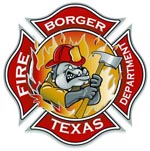
I’m a little late to the game here but just found out that a former hotshot firefighter died last year on June 29. Krstofer Evans was a sawyer on the Plumas Interagency Hotshot Crew in 2001 when the 6-foot 6-inch professional World Cup-level snowboard racer was struck by a falling 70-foot black locust snag. He was very seriously injured and never fought fires again.
According to an article in a 2011 edition of Two More Chains, the injury:
…breaks 15 of his ribs (all but three) and his left scapula and collarbone, smashes his brachial plexus—the network of nerve fibers running from the spine, through the neck, into the armpit area—collapses his left lung, lacerates his spleen, tears the four major ligaments of his right knee, gives him a concussion, and burst-fractures several of his spine’s vertebrae—resulting in paraplegia.
He almost died, but after two weeks in a coma, months in hospitals, and rehab, he did his best to move on from his injuries while paralyzed below the chest and confined to a wheelchair.
Last year Mr. Evans’ body was found in the burned rubble of his Philomath, Oregon home after it caught fire. A neighbor reportedly heard several explosions and the initial reaction of Police Chief Ken Rueben was that “It looks like mishandling of fireworks”. There was speculation that Mr. Evans was making homemade fireworks.
In 2004 three years after the accident he began speaking to wildland firefighters about snag awareness in what became his “Don’t Be That Guy” snag and hazard tree awareness and prevention program.
In his journal posted on his website he wrote about one of his first presentations on the subject:
May 22, 2004 ‘Snag Awareness’ Poster Boy
I’m going up the hill tomorrow to see the [Plumas Hotshot] crew and give the “Lookout for Snags and Stuff” spiel I’ve been runnin’ around with this year. Did it for Ron Marley’s fire class at Shasta College twice already, then to the Redding IHC and Tahoe Hotshots this year. I haven’t seen most of the guys on Plumas since the morning of Oct. 31, 2001. So tomorrow might be a little weird. After I went over to see Tahoe, their Sup, Rick Cowell, sent this out to (damn near all) of the crews:
“On May 7th We had Krs Evans from the Plumas Hotshots give a presentation on snag awareness. It was good. You could hear a pin drop. I wrote him a $100 Govt. check, charged it off to training. Krs is willing to come to your station. His presentation takes about 1.5 hrs. It’s a strong message. It will make you and your cutters more aware. Krs has a van that he drives around, he doesn’t ask for anything except gas money.” Rick Cowell, Tahoe Hotshot Superintendent.”
It’s been all good so far. I never intended to be the “snag awareness” poster-boy, even after the injury. I guess it started with Ron Marley (Fire Chief/instructor, Shasta College) asking me to come up and talk to his students two years ago or so. He wanted to raise their awareness of [what] can happen out there on the line.
In addition to speaking to firefighters and others about safety in the woods, he developed a business making devices for firefighters. He designed and built a hose clamp for shutting off the water flow in small diameter hoses, such as “toy” hose, that fit in your pocket and was a bright color making it easy to see if dropped or left on the ground. He also made an adapter used for charging a cell phone off a hand-held radio clamshell battery. He didn’t make much money from this and the income was deducted from his monthly disability payments.



